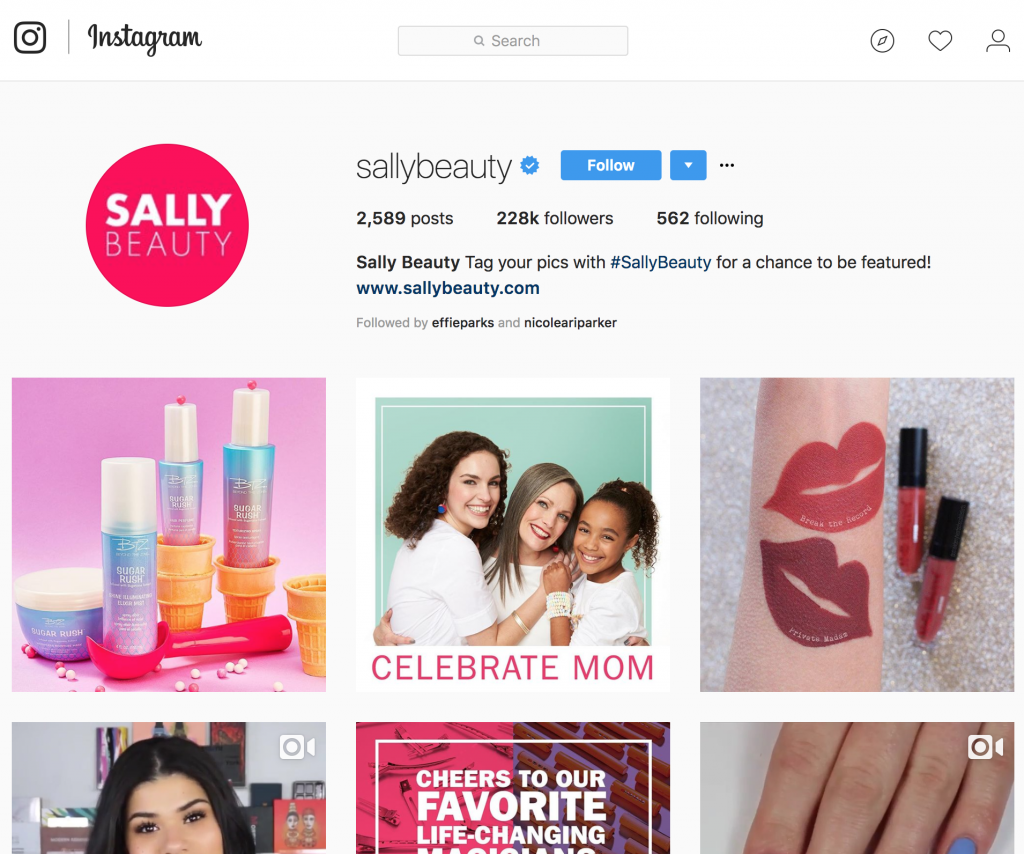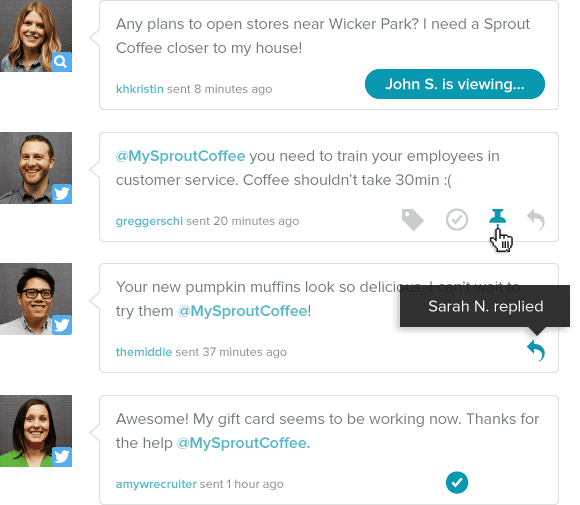Instagram influencers are flooding the feed, but which trendsetters are the best advocates for your brand? And whose popularity translates into better results? Here are eight ways to measure and benchmark your performance when using Instagram influencers.
Before brands plan their social media marketing budgets, it’s important for them to question their own performance and ask how they want influencers to meet their goals.
1. Assess Your Brand Reach Today
Benchmarks are not only important because they give you a snapshot of your brand’s performance now; they also provide the foundation to optimize your new marketing campaigns and learn from past mistakes and successes.
Set Your Benchmarks
Before reaching out to influencers on Instagram, get an overview of your current performance so it’s easier to set up benchmarks to compare before and after influencer campaigns. Distinguish what is normal for social media growth, like whether a gain of 50 followers in one day is significant to your bottom line or not.

How many unique users are you reaching on Instagram and other marketing channels? What is the average number of followers gained month over month? Which are your most popular posts, and how many clicks have they each received? These are just a few of the questions to ask yourself when utilizing Instagram analytics to go over your performance.
Look at Website Performance
In addition to tracking your performance on Instagram and across your other social channels, evaluate key performance indicators for your website, like monthly traffic and conversion rates.
Here are some KPIs for website performance to consider, many of which can be tracked in tools like Google Analytics:
- Page views
- New visitors
- Returning visitors
- Demographics
- Bounce rate
- Average time on page
- Conversion rate
- Goal completions
- Goal conversion rate
- Organic traffic
- Cost per lead
- Cost per transaction
This helps you better see noticeable changes to your website traffic or revenue that you could attribute to spikes or decreases to Instagram influencers post–campaign launch. You can also use analysis tools to measure the website performance of your competitors and compare metrics domain vs. domain.
2. Determine the Right Campaign Goals
After measuring your initial stats, establish quantitative goals and objectives for your campaigns and Instagram influencers. Are you aiming for more engagement on social channels or higher traffic to your brand website?
Goal examples include increasing:
- Social followers
- New website visitors
- New subscribers
- Video views
- Video duration
- Session duration
- Engagement rate
- Conversions
- Conversion rate
- Average per-visit value
Once you gather your post-campaign social stats, you’ll see if you achieved your goals, and you can better identify which factors led to your success. However, if you don’t have the tools to track and benchmark these efforts, it’s more difficult to know if you succeeded.
Whether it’s Instagram Stories, videos, or images, know what to track and what can lead to better goal setting.
3. Check Your Hashtag Metrics
It’s hard to ignore the power of hashtags. When influencers post to millions of followers, their hashtags might show up as trending. When using Instagram influencers for a particular marketing campaign, determine which hashtag metrics to concentrate on. This includes how often your branded hashtags are used, any unique hashtags assigned to influencers, and more.
Blaireadiebee, who has more than 1.1 million followers, used the hashtag #ColorCompleteCollective to group her posts and other influencers’ for a marketing campaign sponsored by argan oil industry leaders. With this hashtag, marketers behind the campaign can tally up total posts, views, and engagement more easily.
If there are promotions and contests through influencer posts, use those hashtags like #giveaway. As part of your campaign, you might include rules and conditions meant to meet your performance goals, such as following your brand’s account or engaging with a post. In this case, you want influencers to use hashtags like #commenttowin and #liketowin.
Besides these hashtag marketing examples, find out which hashtag topics are trending, and get influencers to capitalize on the moment to grow follower numbers and engagement. Get inspiration from other Instagram users by searching the #sponsored tag. Instagram categorizes results by Top Posts and Most Recent so you can see which sponsored posts are popular and which may be trending.
Hashtags are also useful for finding new influencers. Use Instagram analytics to see which users are the most active and popular posters of particular hashtags.
4. Review Traffic from Unique Links
Your goal might be to have the most popular post on Instagram for your target hashtag, but achieving this might mean little when your own business website traffic is stagnating. Give your influencers unique links to include in Instagram posts to track visits to your website.
Another way to increase site clicks is to include unique URLs in your brand account’s bio for influencer-involved promotions, such as giveaways.

5. Closely Monitor Brand Engagement
Why do brands hire influencers? A big part of that is how they interact with their follower base, which they have invested a considerable amount of time growing.
Influencers have positive interactions with their followers that make them come from a place of trust and authority. When influencers highlight a product or service they used, followers are more likely to listen, because they like and relate to these trendsetters.

This will become apparent in engagement metrics, such as engagement type (likes or comments) and engagement over time. A simple way to track changes to these metrics is to calculate engagement rate by dividing your chosen metrics by post impressions.
You will get a percentage that you can compare to your goals, like increasing your overall engagement rate for comments by 5% month over month.
Engagement with Instagram Stories
Since Instagram Stories launched, brands and their influencers have even more ways to create content and communicate with followers. According to Instagram, businesses are responsible for 1 in 3 of the most viewed stories on the platform. With the introduction of Stories, there are other engagement metrics unique to this social channel, including:
- Taps Forward
- Taps Back
- Replies
- Exits
These are types of interactions that show your brand which of your influencers’ Stories catch their attention and encourage them to communicate with you.
Taps Forward and Taps Back are the number of times users tap on Stories to go forward or backward, indicating whether content is enough to hold their attention.
Replies are counted when users swipe up on a story and send a message to your brand.
Exits are when a user leaves the story before finishing to go back to the previous page. When influencers are great brand promoters, you’ll ideally see Replies grow and Exits fall.
Tracking engagement should not focus solely on numbers. The quality of the engagement is just as important. Within these sponsored posts, influencers can answer questions about products or services and point out other marketing channels, like signing up for brand newsletters.
6. Compare Growth with Your Competitors
Competitive analysis is essential if your industry rivals also use influencers. In addition to finding out which influencers and hashtags they use, it’s also smart to analyze the performance on their websites. Simply Measured has competitive analytics tools to collect data related to influencers and competitor website performance.

7. Assign Custom Promo Codes
Who doesn’t love a discount? Armed with promo codes, influencers can give their followers the nudge they need to try out a new product or service by allowing them to save money.
Promo codes are also effective for marketers as a way to track traffic and conversions. When creating custom promo codes, including the name or username of individual influencers makes it easier to know which sales are attributed to particular influencers.
8. Engage with Prospects + Gauge Success
After coming up with your hashtag strategy and other components of your campaign, you’ll need to manage your interactions with these new followers and prospects. With a social media management platform like Sprout Social, you can view comments, questions, tagged posts, and more for your brand in one place.
Connect all your social media channels on a comprehensive platform and check off any remaining items to stay on top of interactions with potential customers.

Speed is crucial during the lead qualification process. If you take too long to respond to a question or direct message, you could lose out on potential customers. According to the Lead Response Management Survey, the odds of qualifying a lead drop 21 times if you wait 30 minutes to contact a lead compared to responding within five minutes.
A social media management platform can minimize your lead response time by eliminating the need to check your social media accounts manually. With all the money spent acquiring leads via influencers, ensure you spend enough time nurturing these leads to close the deal.
Through creating benchmarks and measuring your successes with Instagram influencer campaigns, you’re better equipped to understand how big of an impact influencers are to your marketing framework and which ones are the top promoters for your business.